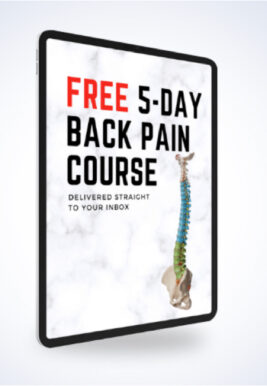Learn
Yeoman Test | Sacroiliitis Examination | SIJ assessment
Patients with pelvic-girdle pain often report difficulties to transfer load between the lower limb and the trunk. The active straight leg raise test, abbreviated as ASLR is thought to test this ability. Mens et al. (2001)evaluated the test regarding its test-retest reliability and validity to discriminate healthy subjects from patients with posterior pelvic pain since pregnancy. They found a test-retest reliability after 1 week of 0.87, a sensitivity of 87%, and a specificity of 94%. For this reason, the ASLR has a high clinical value in practice.
To perform the test, have your patient lie on the bench in supine position with straight legs relaxed in lateral rotation and feet 20cm apart. Then the patient is asked to try to raise her legs one after the other above the couch for 5cm without bending the knee.
If the test is painful, the examiner repeats the test with compression of both anterior superior iliac spines or with a sacroiliac belt around the pelvis. If the movement is no longer painful, the test is scored positive.
O’Sullivan et al. from the year 2007 suggest that the ASLR might be helpful in order to distinguish patients with pelvic girdle pain and reduced force closure of the SI joint from patients with pelvic-girdle pain due to excessive force closure. In the latter group, patients usually have a negative outcome, while compression in the second step of the test might actually be provoking.
Different scores from 0-5 on both sides have been used for this test with 0 indicating no difficulties at all and 5 the inability to lift the leg on one side. While different cut-off points for this test have been discussed, the validity seems to be the highest if no effort, thus a summed score of 0, is scored as negative and 1-10 are all scored positive.
Furthermore, Mens et al in 1999 examined a strong correlation between the test scores and with mobility of the pelvic joints in patients with peripartum pelvic girdle pain. On top of that, the same authors in 2002 found that the active straight leg raise test can be recommended as a disease severity scale for patients with posterior pelvic pain after pregnancy. This is due to the fact that scores from the test from 0 to 10 correlated strongly with the degree of disability on the Quebec Back Pain Disability Scale.
At last, Mens et al. (2017) have shown that the TrA shows excessive contraction during the ASLR in patients with long-lasting pregnancy-related posterior pelvic girdle pain. This implies that there is no rationale for the prescription of exercises to enhance the contraction of TrA in patients with long-lasting pregnancy-related PGP, so another nail in the coffin for the core stability myth.
Other common orthopedic tests that aim to provoke the sacroiliac joint are:
- Distraction Test
- Sacral Thrust Test
- Gaenslen’s Test
- Sacroiliac Compression Test
- Cluster of Laslett
- Cluster of van der Wurff
MASSIVELY IMPROVE YOUR KNOWLEDGE ABOUT LOW BACK PAIN FOR FREE

References
Like what you’re learning?
BUY THE FULL PHYSIOTUTORS ASSESSMENT BOOK
- 600+ Pages e-Book
- Interactive Content (Direct Video Demonstration, PubMed articles)
- Statistical Values for all Special Tests from the latest research
- Available in 🇬🇧 🇩🇪 🇫🇷 🇪🇸 🇮🇹 🇵🇹 🇹🇷
- And much more!








